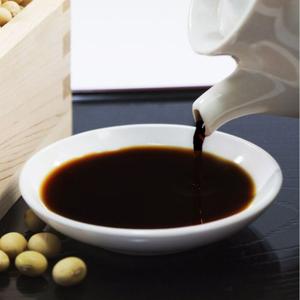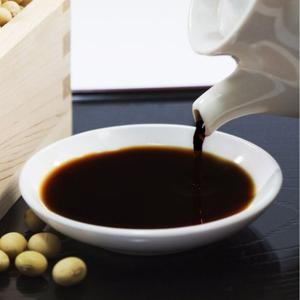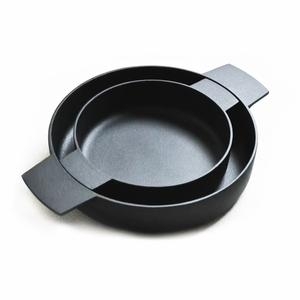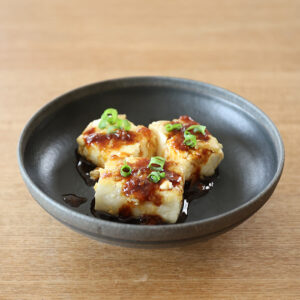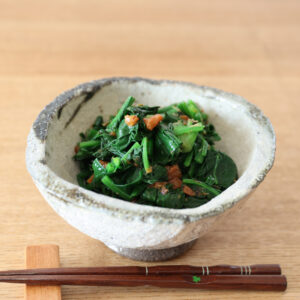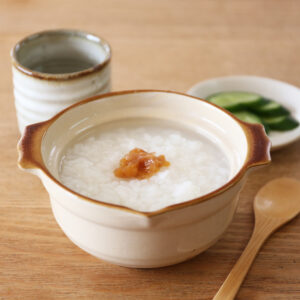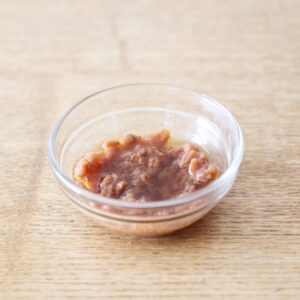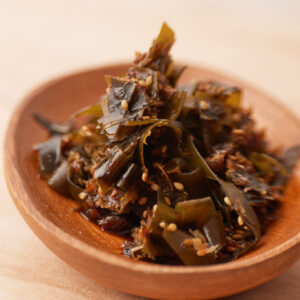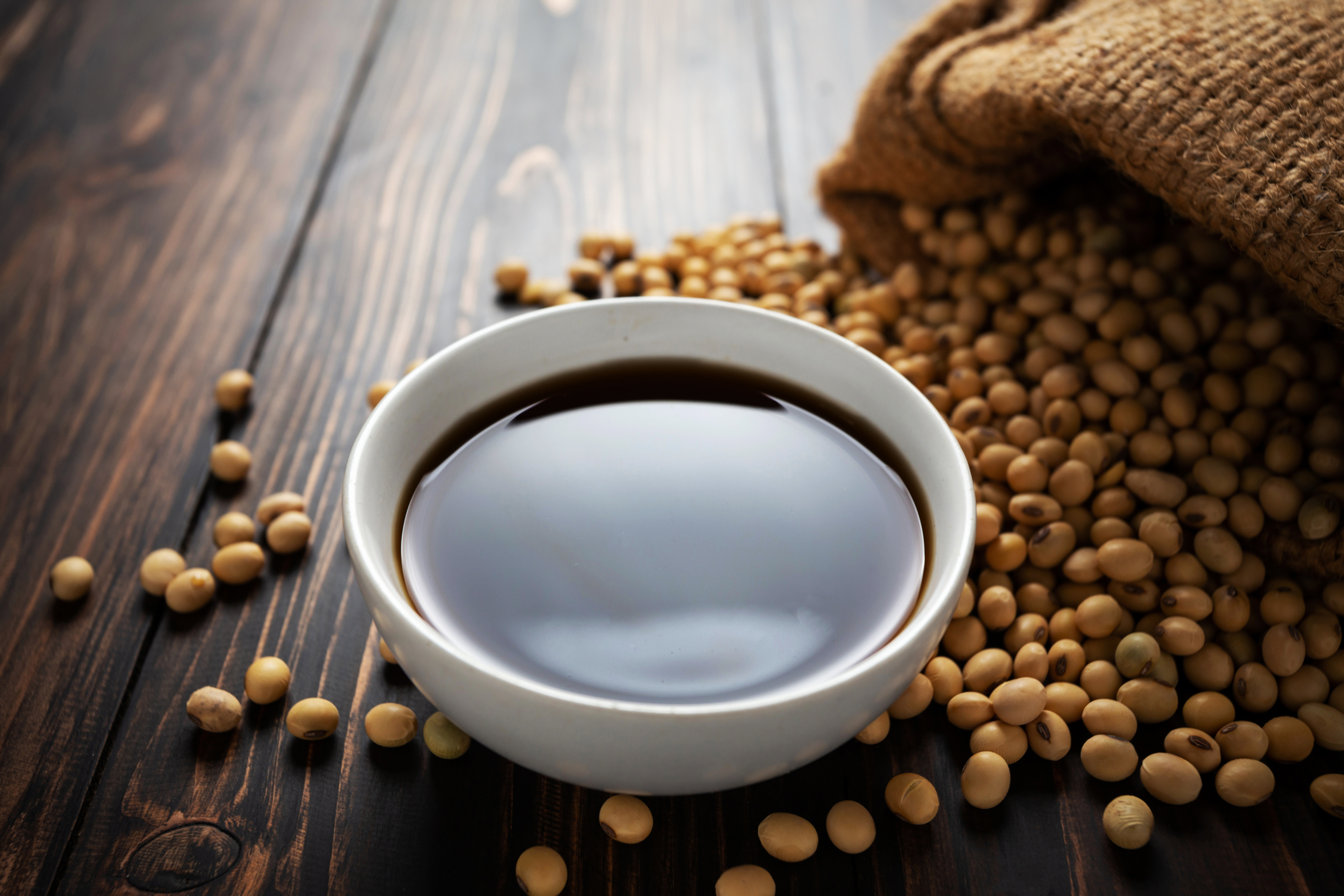
Whether you‘re trying it for health reasons or just want to explore a new taste, tamari sauce is a great substitute for regular soy sauce. Tamari sauce is famous for its umami taste, you can use it for many delicious recipes. Some even say that tamari sauce is a healthier choice for people who cannot eat gluten.
So, what exactly is tamari sauce?
Contents List
- What Is Tamari Sauce?
- Tamari Sauce Special Traits: Why Choose Tamari Sauce?
- The Differences Between Tamari Sauce And Regular Soy Sauce
- Tamari Sauce And Gluten Free Diet
- So, Is Tamari Sauce a Healthier Choice?
- Tamari Sauce Brewing Process
- Soaking And Steaming
- Koji Making
- Shikomi
- Aging (Maturation)
- Bottling
- Recipe Using Tamari Sauce
- Frequently Asked Questions About Tamari Sauce
- Recommended Products For Tamari Sauce
What Is Tamari Sauce?
Tamari sauce or tamari soy sauce is a wheat-free Japanese variety of soy sauce. It is a fairly well known condiment so you can probably find it in the Asian condiment aisle in grocery stores near you.
In order to be massively produced, regular soy sauce (shoyu) is brewed with 50% wheat as an additional ingredient. As we know, wheat contains gluten, a protein that may trigger health problems to those who are intolerant.
Tamari sauce can be a great alternative to regular soy sauce since both have a slight similarity in terms of taste. In fact, due to its characteristic, tamari sauce has become a favorite soy condiment especially for those who want to eat gluten free. There are also certified gluten free tamari sauce in the market for people who cannot eat gluten at all.
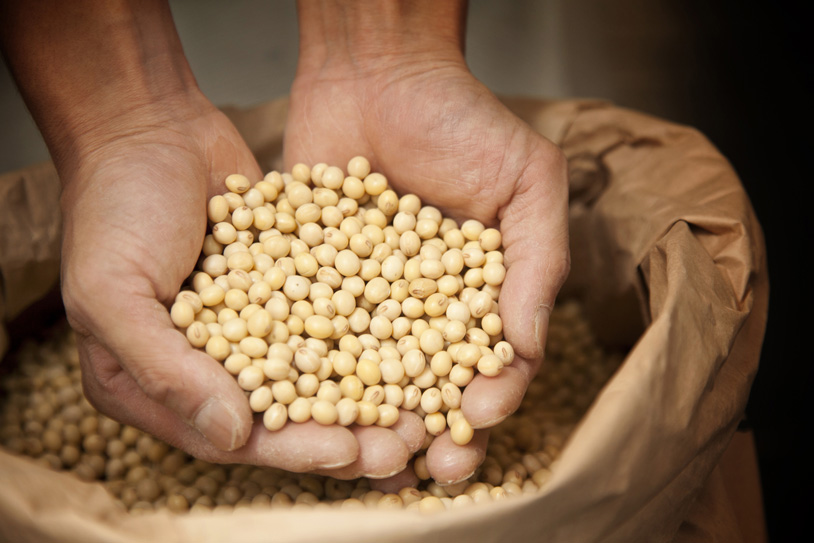
Because tamari sauce is usually 100% soy based, it has a richer flavor profile. Although some brands may use wheat for their tamari production, the amount of wheat used is extremely small compared to regular soy sauce. Wheat usage in tamari sauce production is also done very rarely.
Originally, Tamari sauce was a byproduct of miso production. Tamari sauce is the liquid that accumulates during the fermentation process of soy when turning it into miso. The word 溜り tamari means collection, pool of water, or liquid runoff. In the miso industry, tamari means the liquid runoff from miso preparation.
Tamari sauce is great as a dipping sauce for sashimi and sushi. It can also be used for seasoning many dishes like teriyaki or used as a salad vinaigrette. When heat is applied to tamari sauce, the sauce will have a reddish hue, making it look good glazed on Japanese rice crackers.
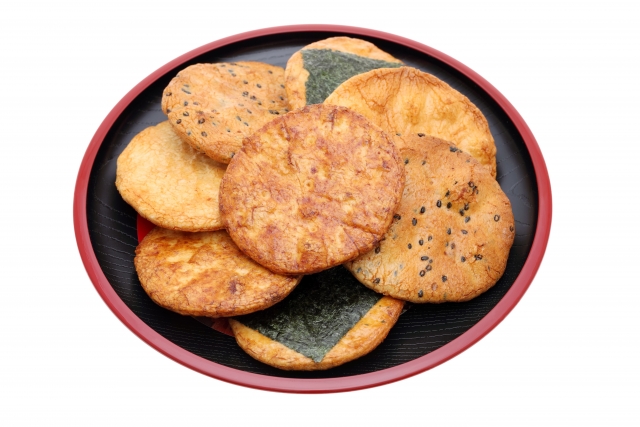
In Japan, some households in Kyushuu and Tokai region uses tamari sauce instead of regular soy sauce for everyday cooking.
Read more about regular soy sauce in our article below.
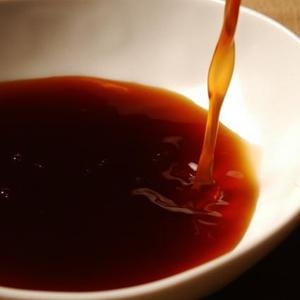
Tamari Sauce Special Traits: Why Choose Tamari Sauce?
Mostly 100% Soy based
Smooth umami, less abrasive taste
Thicker texture and deeper color
Rich in protein
Reduced Sodium
The Differences Between Tamari Sauce And Regular Soy Sauce
Tamari sauce is considered to be a type of soy sauce. But due to the ingredients and making process, tamari sauce has different characteristics when compared to regular soy sauce. Here are the difference between tamari sauce and regular soy sauce.
| Tamari Sauce | Regular Soy Sauce |
|---|---|
| Less Sodium | More Sodium |
| Usually made from 100% soybeans | Usually made from 50% soybeans and 50% wheat (Some brands replace wheat with rice or corn starch in order to make gluten free soy sauce) |
| Deep umami taste. Less salty | Sharp and salty |
| Dark brown, almost black color | Brown color (Some other type of soy sauce have light brown or even almost clear color) |
| Aged for more than a year | Mostly aged for a year or less than a year |
Tamari Sauce And Gluten Free Diet
The fact that a lot of people choose to go gluten-free might be a good factor why tamari sauce has gained so much popularity these days. Whether you eat gluten-free because of health condition or because of your personal preference, tamari sauce is a good choice to spice up your cooking. For people who cannot consume gluten at all, it’s recommended to buy tamari sauce that has a gluten free certification. Tamari sauce is usually 100% soy based, but some brands use a small amount of wheat during their brewing process. It might be too risky to pick any tamari sauce when you have a severe gluten hypersensitivity. Lately, gluten free tamari sauce is getting more and more popular so it should be easier to find today.
So, Is Tamari Sauce a Healthier Choice?
It’s relative. If we’re comparing to regular soy sauce, tamari soy sauce does have less sodium and contains more protein and minerals.
Whether tamari sauce is significantly healthier or not, it is still fairly debatable. But it is a good choice for someone who prefers richer tasting soy sauce. Besides, it can also be used to substitute salt as food seasoning.
And since tamari sauce is 100% soy-based, it can be a great option for someone who cannot eat gluten. Thus, a healthier choice for them.
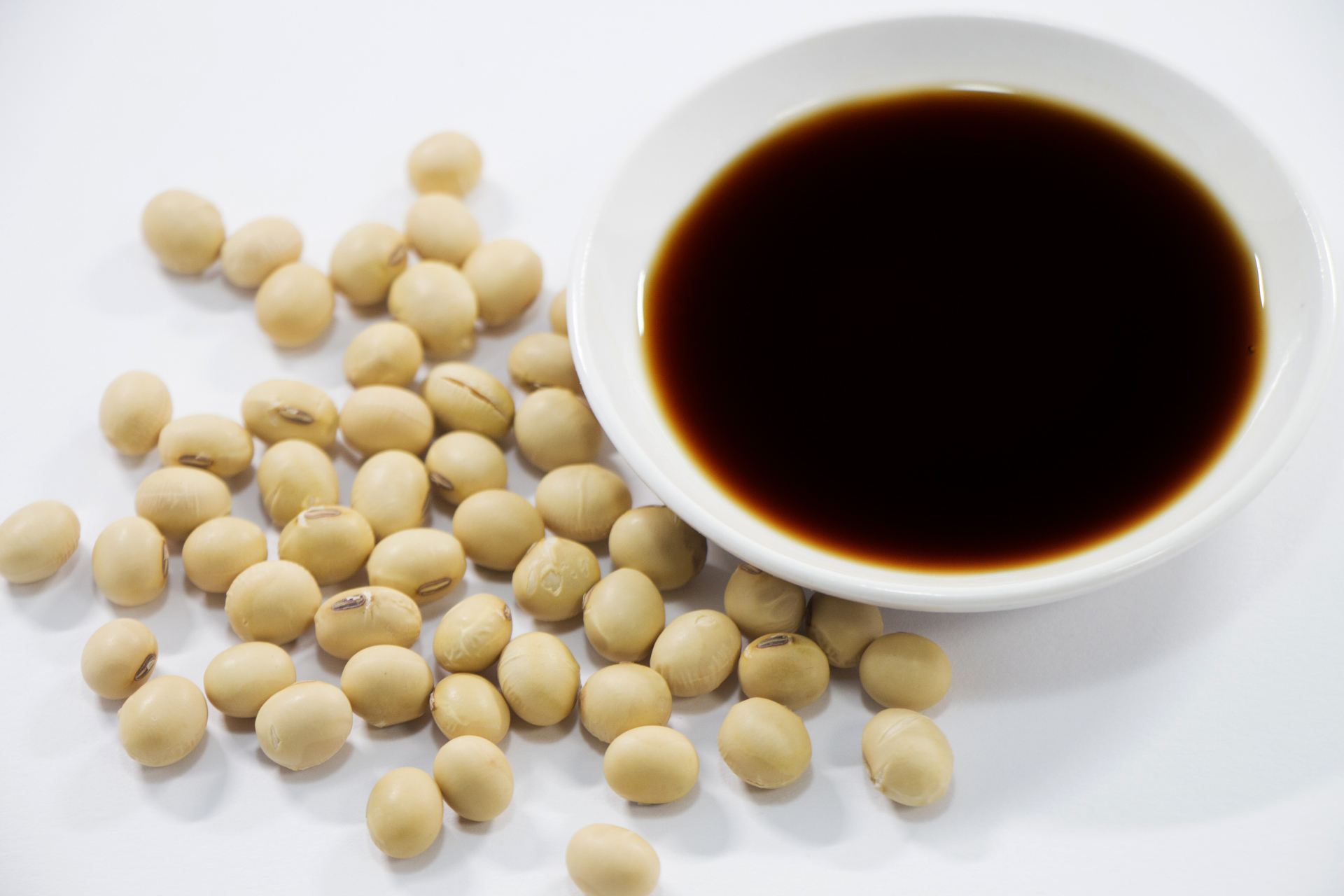
Tamari Sauce Brewing Process

Soaking and Steaming
Soybeans are washed and soaked for 2 hours and then steamed until soft
Koji making
Koji is a fermentation product made from a mold called aspergillus oryzae. It is used in many traditional Japanese food.
After the soybeans are steamed, they are minced into paste with machines and shaped into balls called misodama. After that, the misodama is sprinkled with koji starter to propagate koji. This propagation process is done for 3 days. After propagation is done, koji will be seen on the surface of the misodama.
Shikomi
In Japanese, shikomi means preparation. During this step, misodama that already has propagated koji is moved into a big wooden vessel. This vessel is closed with stones. The stones have to be neatly arranged, almost like a puzzle, so the weight is equal on all sides and all surface is covered. This job needs to be done by an experienced worker.
After the stones are arranged, salted water is added to the mixture through the stones. The amount of salted water can vary from half the scale of the soy mixture, to one full scale.
Aging (Maturation)
The maturing process of the mixture can take 2 to 3 years. After that, an umami liquid runoff will accumulates. This liquid runoff which is the tamari sauce can be collected. Some factories also pressed their mixture paste (moromi) in order to extract the tamari sauce.
Bottling
After extraction, tamari sauce is ready to be bottled and distributed.
Recipe Using Tamari Sauce
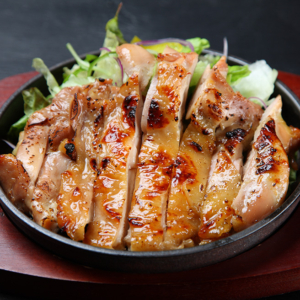
Chicken Teriyaki With Tamari Sauce
Ingredients
- 250 g Boneless Chicken Thigh
- 1 piece Ginger grated (approx. 2.5cm)
- 2 tbsp Tamari sauce
- 2 tbsp Oil
- 0.25 tsp Salt
- 0.25 tsp Blackpepper
- 1 tbsp Sake
- 1 tbsp Mirin
- 1 tbsp Sugar
- 100 ml Water
Instructions
- Cut chicken into small pieces, salt and pepper the chicken. Make sure not to over salt the chicken because tamari sauce already has a certain saltiness in them.
- Turn on the stove to medium heat, put oil on frying pan, and cook the chicken. Don’t forget to sear both sides.
- After the chicken in half cooked, add ginger, sake, mirin, sugar, tamari sauce, and water. Stir well until everything is incorporated.
- Close the frying pan with a lid, turn the heat down, and simmer chicken for about 7-10 minutes.
- Open the lid, turn the heat up, stir and simmer until the liquid is reduced.
- Chicken teriyaki is ready to serve.
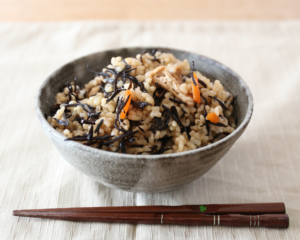
Seasoned Brown Rice with Hijiki Seaweed
Ingredients
- 720 g Brown Rice
- 500 ml Water
- 1 tsp Tamari Sauce 6g
- 0.5 tsp Salt 3g
- 12 g Hijiki Seaweed
- 0.25 piece Carrot
- 0.5 pieces Aburaage Fried Tofu Pouch
Instructions
- Rinse the brown rice and soak it in plenty of water for at least half a day (6 hours). Drain the brown rice after it is soaked plenty. Then, wash the sprout hijiki quickly.
- Cut the carrots into 2 cm pieces. After that, boil the fried tofu to drain the oil and cut into 2 cm pieces.
- Put drained brown rice in the inner pot (earthenware pot, rice cooker, or pressure cooker) of the rice cooker and pour water. ※The water amount might differ if you use a different machine, so please count the water according to how to cook brown rice article.
- Add tamari sauce and salt and mix well.
- Add carrots, aburaage, and hijiki seaweed and mix quickly.
- Cook with the method of cooking brown rice.
- Once cooked, mix the whole thing thoroughly. Serve with other food or pack for a rice ball (onigiri) or bento.
Comments from Registered Dietitian About This Recipe
- Seasoned mixed brown rice is recommended for those who find it difficult to eat brown rice as it is, which has a unique flavor. In addition, carrot vitamin A, hijiki calcium, and fried protein supplement the nutritional deficiency of brown rice. It's also a recommended recipe to eat when you don't have time or make rice balls for your lunch.
Product Used In The Recipes
Frequently Asked Questions
- Can I substitute soy sauce with tamari sauce?
- Absolutely. Tamari sauce is one suitable option to substitute soy sauce and shoyu. Its taste similarity, versatile uses, and gluten-free traits make tamari sauce can substitute soy sauce.
- What does tamari sauce taste like?
- The tamari sauce made with 100% soybeans will have a mellow, thick, and savory flavor soybeans. Its prominent umami makes this sauce compatible as a dipping sauce, season dishes, and salad dressings.
- Is all tamari sauce gluten-free?
- Not necessarily. Though they are mostly brewed without wheat, it’s still safer to bet on tamari sauce that has a certified gluten-free label on them, especially if you have celiac disease or gluten hypersensitivity. It is very unlikely that tamari sauce uses gluten in it, but it’s better to be sure and check the ingredients.
- What are the differences between gluten-free tamari sauce vs. gluten-free soy sauce?
- Yes, there is a gluten-free soy sauce. I know it may be confusing, but both variants come in gluten-free options. The main difference is that gluten-free tamari is 100% made from soybeans, while gluten-free soy sauce’s main ingredients are soybeans and rice (some brands use corn starch) to replace wheat. Another distinctive feature is their taste difference.
That said, sometimes brands also label their tamari sauce as ‘gluten-free soy sauce.’ So to differentiate, remember that tamari sauce is usually 100% soy-based while regular soy sauce is not.
- How to store tamari sauce?
- Please store the tamari sauce in the refrigerator. Storing tamari sauce in a dark and cool place is also an option, but we recommend you refrigerate the sauce to maintain its quality.
- Where can I buy tamari sauce?
- You can easily find tamari sauce in nearby grocery stores, more variety in the Asian grocery store, or see your favorite brand in an online shop. Tamari sauce is usually placed in the Asian condiment aisle near soy sauces.
If you are looking for 100% soybeans tamari sauce, be sure to double-check the ingredients or find the product with gluten-free label.
Recommended Products For Tamari Sauce

